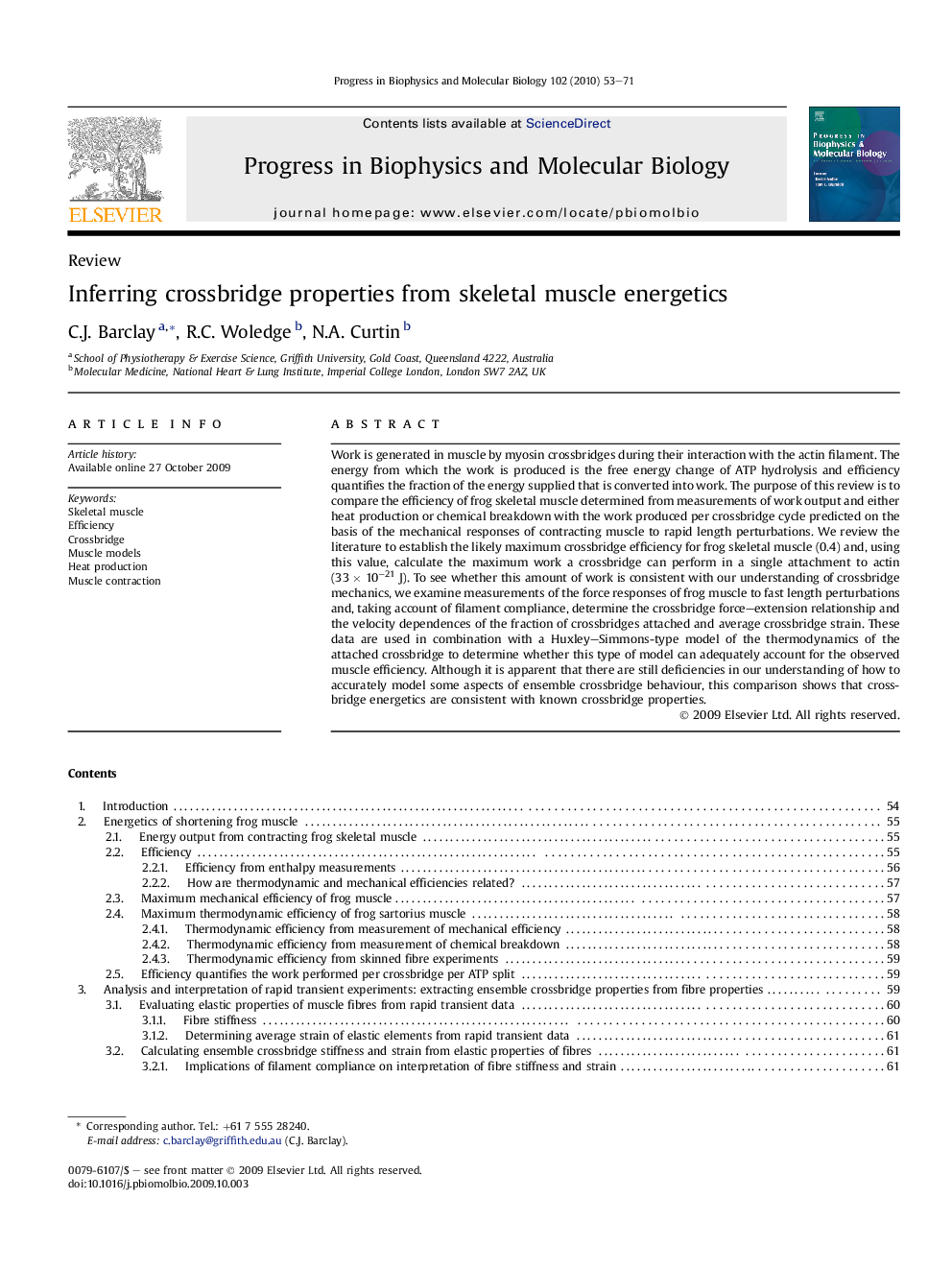| Article ID | Journal | Published Year | Pages | File Type |
|---|---|---|---|---|
| 2070293 | Progress in Biophysics and Molecular Biology | 2010 | 19 Pages |
Work is generated in muscle by myosin crossbridges during their interaction with the actin filament. The energy from which the work is produced is the free energy change of ATP hydrolysis and efficiency quantifies the fraction of the energy supplied that is converted into work. The purpose of this review is to compare the efficiency of frog skeletal muscle determined from measurements of work output and either heat production or chemical breakdown with the work produced per crossbridge cycle predicted on the basis of the mechanical responses of contracting muscle to rapid length perturbations. We review the literature to establish the likely maximum crossbridge efficiency for frog skeletal muscle (0.4) and, using this value, calculate the maximum work a crossbridge can perform in a single attachment to actin (33 × 10−21 J). To see whether this amount of work is consistent with our understanding of crossbridge mechanics, we examine measurements of the force responses of frog muscle to fast length perturbations and, taking account of filament compliance, determine the crossbridge force–extension relationship and the velocity dependences of the fraction of crossbridges attached and average crossbridge strain. These data are used in combination with a Huxley–Simmons-type model of the thermodynamics of the attached crossbridge to determine whether this type of model can adequately account for the observed muscle efficiency. Although it is apparent that there are still deficiencies in our understanding of how to accurately model some aspects of ensemble crossbridge behaviour, this comparison shows that crossbridge energetics are consistent with known crossbridge properties.
